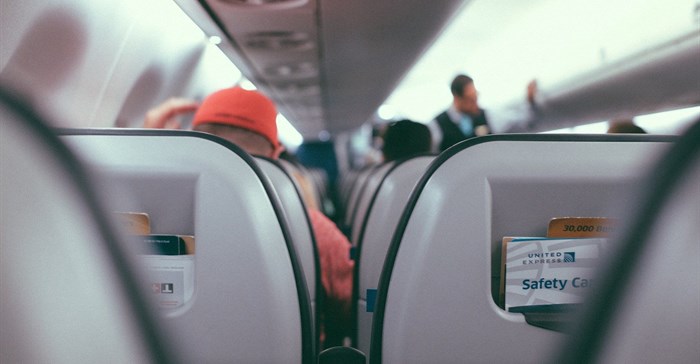
Subscribe & Follow
#AfricaMonth
Jobs
In the news
Responsible air travel is safe air travel, in the time of Covid-19

The airlines, including ourselves at Air France KLM and relevant stakeholders at each step in the aviation process, want to do as much as possible to allow people to travel for business and pleasure, safely and with peace of mind – and as soon as possible. IATA, the WHO, airlines and stakeholders are all looking at blanket protocols that ensure a minimum prescribed level of coronavirus safety for air travel.
The best that we can do in ensuring that travel is safe again is to adhere to these prescribed levels – and practise common sense. The perception that flying is unsafe during a global viral pandemic needs to be mitigated – and we believe that we can provide a safe, sanitised travel environment for flights to resume, if everyone buys into the process.
There are so many touchpoints where any large group of people come together – as they would at an airport and on a flight – so all stakeholders have to go through every step of the process in an effort to ensure that those touchpoints are as safe as possible for passengers, crew and all the staff across the logistical functions at airports.
Improving flight safety
Much as travellers had to adapt to a 'new normal' in terms of security procedures post-9/11, there will be some changes to the way we move through airports and experience flights, in the face of Covid-19. And – much as the post-9/11 security restrictions were adapted and eased as we found ways of improving flight safety – some of these measures may be eased or removed altogether, in the future.
There are already a host of measures which are being adopted in society to keep people from contracting the virus in the absence of a vaccine, and those measures need to be applied to flying, as well. Considerations include individual temperature screenings for passengers at the entrance to airport buildings. Only those who are travelling and who pass this initial assessment, would be allowed to access the terminal, to limit the number of people inside and enable social distancing.
This could eventually progress to the presentation of a 'Health Passport' as a requirement for travel, indicating that the passenger has recovered from the virus or has been vaccinated against it. We have to work with the available information and best practise until we find a better way of mitigating the risks.
Airlines have already put in place physical barriers between check-in agents and passengers, and airports will most likely have to do the same at passport control and other face-to-face touchpoints. Airport staff and airline crew need to be issued with PPE and alcohol-based sanitisers and their health must be constantly monitored. For passengers, masks will be the order of the day, both inside the airport and on-board flights, outside of meal services.
Airlines are working to find the safest ways to have passengers queue and board, determine how they move around inside the aircraft and interact with crew at mealtimes, and the like. We’re looking at things like boarding row-by-row, from the rear of the aircraft, and with window seat passengers first, to minimise the possibility of contact between them. We may need to look at limiting the amount of - or excluding - hand luggage on board in the early stages, to remove an additional touchpoint.
Cabin services will have to change – though many airlines pride themselves on the quality of their passenger interactions, we’ll have to find ways to maintain service levels as far as possible, while minimising contact. Some airlines have proposed doing away with on-board catering on short-haul flights, while a solution for long-haul flights may be to place pre-packaged meals on seats, before boarding.
Tightening onboard protocols
Social distancing on board will have to be managed carefully – leaving a one-seat gap between passengers doesn’t allow for effective distancing, but this is mitigated anyway by the cabin airflow and the physical barrier of seatbacks. Airlines will spread passengers out as far as possible while loads are low – which is done anyway for comfort reasons – and will rely on responsible management of mitigation protocols by crew and passengers once aircraft are fuller again
There have been a few studies about the chances of coronavirus infection on-board flights, so far, with relatively encouraging results. There was one pilot contamination (which may have occurred outside of the aviation chain) and one passenger-to-crew member transmission, but no evidence, thus far, of passenger-to-passenger transmission. This has a lot to do with how the air inside an aircraft is completely refreshed and filtered, every three minutes, with air flowing down from the overhead vents, to the floor – and not circulating around the cabin.
Every Air France and KLM aircraft, for example, is also fitted with operating theatre-grade HEPA filters, which are able to filter out 99.99% of viruses and bacteria – including viruses the size of coronavirus molecules. All aircraft will have to be completely disinfected every 24 hours and, on high-risk routes, on arrival.
It is envisioned that all the screening and validation processes done before boarding will go a long way to mitigating the risk of Covid-19-positive passengers making it onto the flight, in the first place. By working together, we can open up the world for business and leisure travel in the near future – safely.











